How Much Does It Cost to Build a Small Hospital?
Building a small hospital is a significant undertaking that requires careful planning, budgeting, and execution. Hospitals are complex structures that need to meet stringent healthcare standards while providing a safe and comfortable environment for patients and staff. Understanding the costs involved is essential whether you are a healthcare provider, an investor, or a project manager. This blog will break down the expenses, explain the factors affecting these costs, and offer practical tips for managing your hospital construction project effectively.
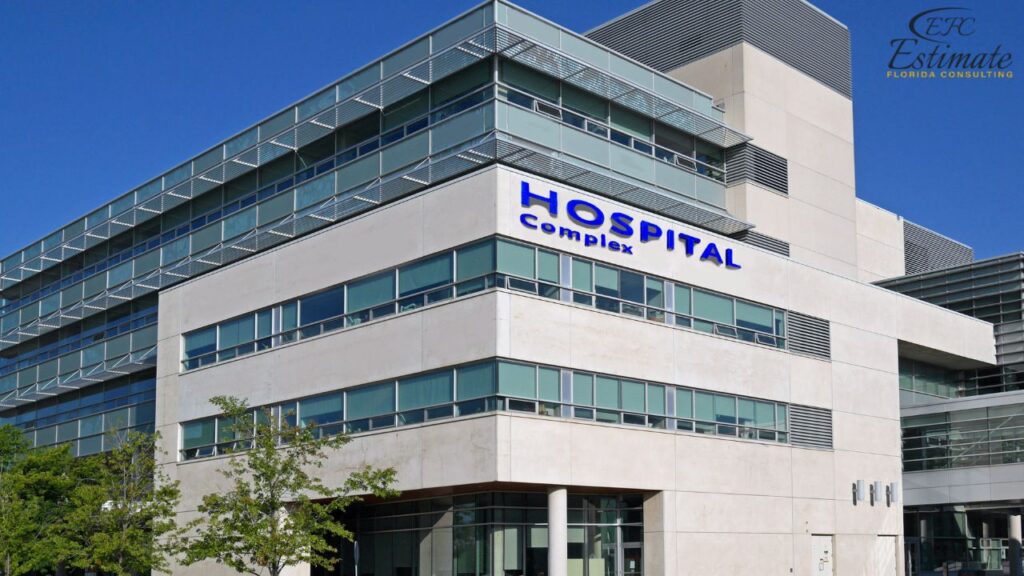
The Importance of Planning and Budgeting
Before diving into the costs, it’s important to grasp why thorough planning and budgeting are crucial. A well-planned project can prevent expensive overruns, ensure timely completion, and guarantee that the hospital meets all regulatory requirements. Engaging experienced architects, engineers, and construction managers from the beginning can provide invaluable guidance and streamline the planning process. Detailed risk assessments and contingency planning are also vital, helping to identify and manage potential issues proactively.
Average Cost Breakdown
Building a small hospital can cost between $30 million and $70 million or more, depending on various factors. Here’s a breakdown of where that money typically goes:
Component | Estimated Cost (in dollars) |
Land Acquisition | $2 million – $5 million |
Design and Engineering | $3 million – $7 million |
Construction | $20 million – $40 million |
Medical Equipment | $3 million – $8 million |
Administrative Costs | $1 million – $2 million |
Contingencies | $1 million – $3 million |
Detailed Cost Breakdown
Land Acquisition
Land costs can vary widely depending on the location. Urban areas typically have higher land costs than rural areas. The size of the land required also impacts the cost. Beyond the purchase price, you need to consider site preparation costs, including grading, utilities, and environmental assessments. Choosing the right location can enhance patient accessibility and contribute to the hospital’s long-term success.
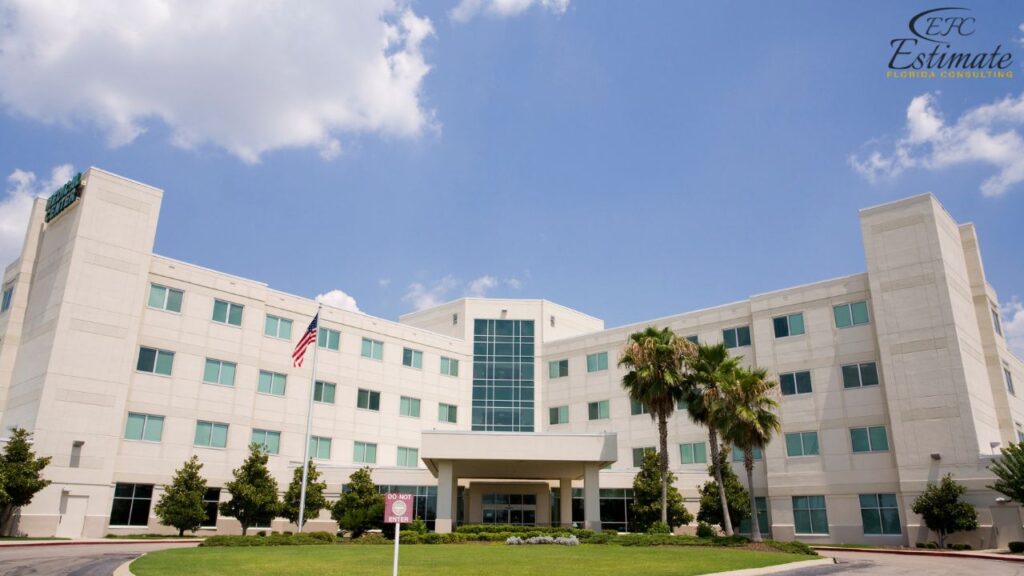
Sub-Component | Estimated Cost (in dollars) |
Land Purchase | $2 million – $4 million |
Site Preparation | $0.5 million – $1 million |
Design and Engineering
This category covers the fees for architects, engineers, and other professionals who develop the hospital’s blueprints and plans. This phase includes creating the structural design, electrical and plumbing systems, and ensuring compliance with all building codes and healthcare regulations. Investing in experienced designers and engineers can prevent costly design flaws and ensure the hospital is both functional and efficient.
Sub-Component | Estimated Cost (in dollars) |
Architectural Design | $1 million – $2.5 million |
Structural Engineering | $0.5 million – $1 million |
MEP (Mechanical, Electrical, Plumbing) Engineering | $1 million – $2.5 million |
Construction
Construction is the most significant part of the budget. This includes the cost of materials, labor, and project management. The complexity of the hospital’s design, the quality of materials, and the construction duration all influence these costs. Specialized construction techniques and materials are required to ensure patient safety and comply with healthcare standards.
Sub-Component | Estimated Cost (in dollars) |
Materials | $8 million – $15 million |
Labor | $10 million – $20 million |
Project Management | $2 million – $5 million |
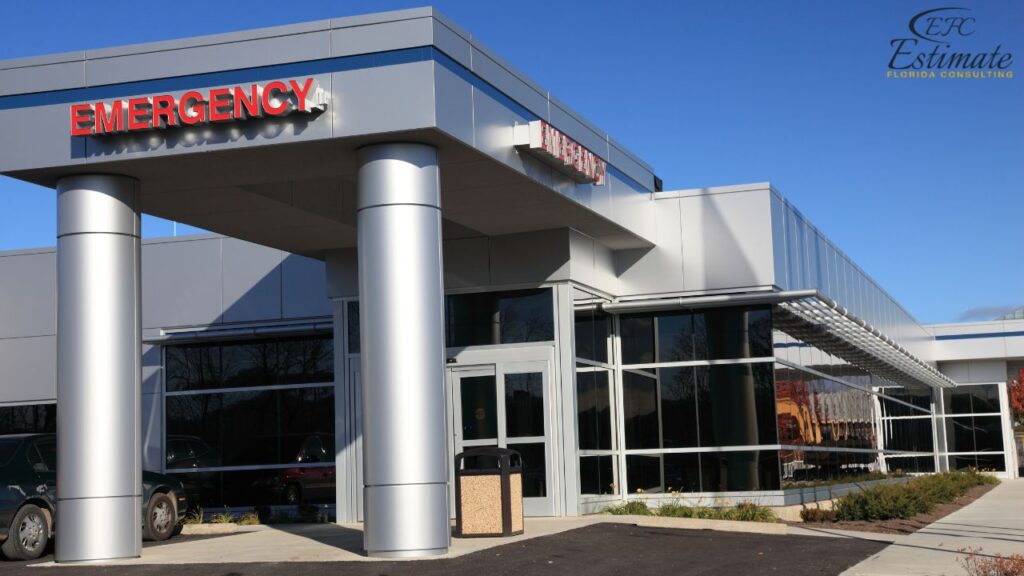
Medical Equipment
Equipping the hospital with necessary medical devices is another major expense. This includes diagnostic machines, surgical instruments, and patient monitoring systems. The cost can vary based on the type and brand of equipment. State-of-the-art technology can enhance patient care and attract skilled healthcare professionals.
Sub-Component | Estimated Cost (in dollars) |
Diagnostic Equipment | $1 million – $3 million |
Surgical Instruments | $0.5 million – $2 million |
Patient Monitoring Systems | $0.5 million – $2 million |
Administrative Costs
Administrative costs cover project management, legal fees, permits, and insurance. These ensure compliance with all legal and regulatory requirements and adequate insurance coverage against potential risks. Proper project management is crucial for coordinating various aspects of the construction process and ensuring timely completion.
Sub-Component | Estimated Cost (in dollars) |
Project Management Fees | $0.5 million – $1 million |
Legal Fees | $0.2 million – $0.5 million |
Permits and Insurance | $0.3 million – $0.5 million |
Contingencies
Contingency costs are funds set aside to cover unexpected expenses during construction. These can include unforeseen site conditions, changes in project scope, or price increases for materials and labor. A contingency budget helps manage these risks and ensures the project can continue smoothly despite unexpected challenges.
Sub-Component | Estimated Cost (in dollars) |
Unforeseen Site Conditions | $0.5 million – $1.5 million |
Scope Changes | $0.2 million – $0.7 million |
Material/Labor Price Increases | $0.3 million – $0.8 million |
90% More Chances to Win Projects With Our Estimate!
- Multi-Family Building
- Hotel Building
- Hospital Building
- Warehouse Building
- School & University Building
- High-Rise Building
- Shopping Complex
- Data Center Building
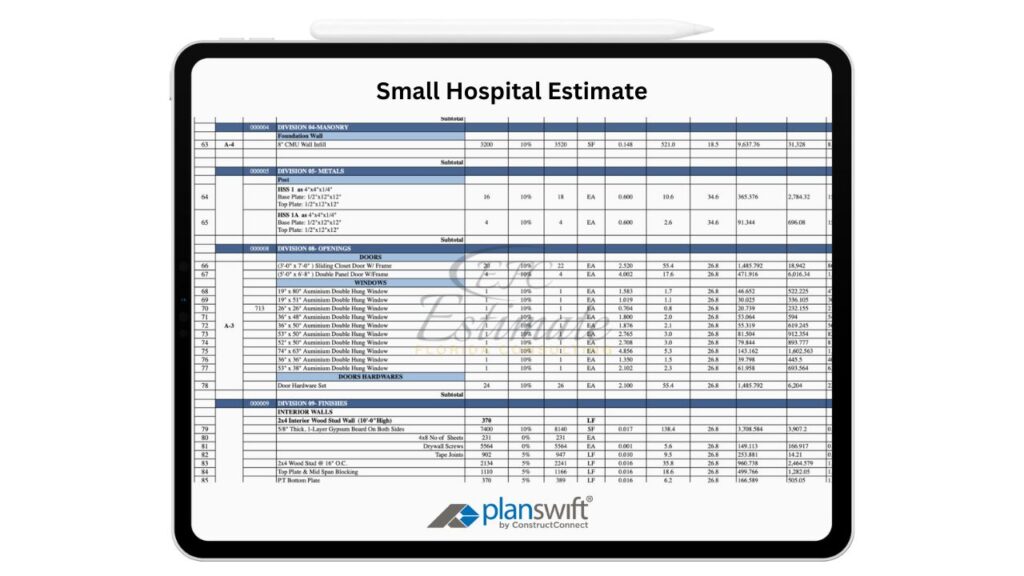
Factors Affecting the Cost of Building a Small Hospital
Location
Location plays a crucial role in determining the overall cost. Urban areas generally have higher land and construction costs due to higher demand and stricter building codes. Labor costs can also be higher in urban areas. Additionally, the location affects the hospital’s operational costs, such as utilities, transportation, and staffing. An ideal location balances cost, accessibility, and community needs.
Size and Design
The size and design of the hospital significantly impact the cost. Larger hospitals with more patient rooms, specialized departments, and advanced facilities will naturally cost more. The complexity of the design, such as advanced surgical suites and intensive care units, also affects the overall cost. A well-designed hospital enhances patient recovery, staff efficiency, and operational effectiveness, making it a worthwhile investment.
Healthcare Services Offered
The range of services offered by the hospital will affect the cost. A hospital providing basic services such as emergency care and general surgery will have different costs compared to one offering specialized services like oncology and cardiology. The type of medical equipment and facilities required for specialized services can significantly increase the budget.
Regulatory Compliance
Hospitals must comply with strict healthcare regulations and standards, which can influence construction costs. These regulations cover building safety, patient privacy, infection control, and accessibility. Ensuring compliance requires careful planning, specialized materials, and sometimes additional construction techniques, all of which can add to the cost. Compliance ensures patient safety, operational legality, and eligibility for insurance and government funding.
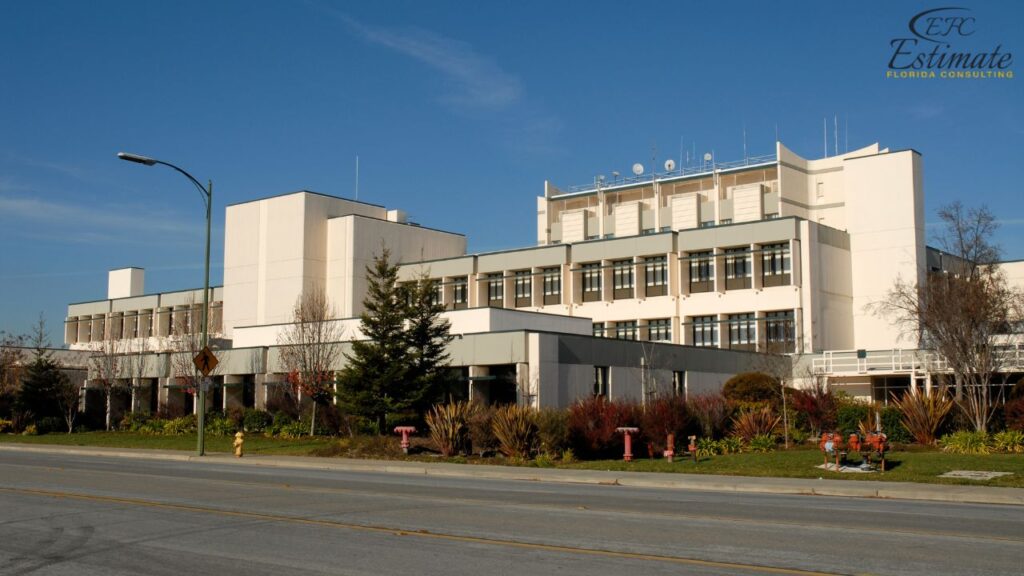
Sustainability and Green Building
Incorporating sustainable and green building practices can increase initial construction costs but offer long-term savings through energy efficiency and reduced operating costs. Green building certifications, such as LEED, require specific design and construction practices that can add to the project’s complexity and cost. However, these investments can improve the hospital’s environmental footprint and appeal to eco-conscious patients and staff.
Tips for Managing Hospital Construction Projects
Engage Experienced Professionals
Hiring experienced architects, engineers, and construction managers who specialize in healthcare facilities is crucial. These professionals understand the unique requirements of hospital construction and can ensure the project meets all regulatory and safety standards. Their expertise can also help identify cost-saving opportunities and streamline the construction process.
Develop a Detailed Project Plan
A detailed project plan that outlines the scope, timeline, and budget is essential for managing a hospital construction project. This plan should include all phases, from initial planning and design to construction and final inspection. Regularly updating and reviewing the project plan can help identify potential issues early and keep the project on track.
Budget for Contingencies
Setting aside a contingency budget to cover unexpected expenses is critical. Construction projects often encounter unforeseen challenges, such as site conditions, weather delays, or changes in project scope. A contingency budget helps manage these risks and ensures the project can continue without significant financial disruptions.
Prioritize Quality and Safety
While managing costs is important, prioritizing quality and safety is essential when building a hospital. Using high-quality materials and following best construction practices ensures the hospital is safe, durable, and compliant with healthcare standards. Cutting corners to save costs can lead to safety issues, regulatory violations, and higher maintenance costs in the long run.
Download Template For Hospital Construction Project Breakdown
- Materials list updated to the zip code
- Fast delivery
- Data base of general contractors and sub-contractors
- Local estimators

Regular Communication and Updates
Maintaining regular communication with all stakeholders, including the construction team, healthcare providers, and regulatory agencies, is crucial for a successful project. Regular updates and meetings can help address issues promptly, ensure everyone is on the same page, and keep the project moving forward smoothly.
Conclusion
Building a small hospital is a complex and costly endeavor that requires careful planning, budgeting, and management. By understanding the various costs involved and the factors that influence these costs, stakeholders can make informed decisions and ensure a successful project. Investing in experienced professionals, developing a detailed project plan, and prioritizing quality and safety are key to building a hospital that meets the needs of the community and provides high-quality healthcare services. With proper planning and execution, a new hospital can significantly enhance healthcare access and outcomes for the population it serves, ultimately contributing to a healthier and more resilient community. The financial and operational success of a hospital project hinges on meticulous preparation, continuous stakeholder engagement, and an unwavering commitment to excellence and safety throughout the construction process.
FAQs
Building a small hospital can cost between $30 million and $70 million or more, depending on various factors such as location, design complexity, and the range of healthcare services offered.
The major cost components include:
- Land Acquisition: $2 million – $5 million
- Design and Engineering: $3 million – $7 million
- Construction: $20 million – $40 million
- Medical Equipment: $3 million – $8 million
- Administrative Costs: $1 million – $2 million
- Contingencies: $1 million – $3 million
Thorough planning and budgeting prevent expensive overruns, ensure timely completion, and guarantee that the hospital meets all regulatory requirements. Engaging experienced professionals and conducting detailed risk assessments are crucial for successful project execution.
Land acquisition costs vary widely based on location. Urban areas typically have higher costs than rural areas. Additionally, site preparation costs such as grading, utilities, and environmental assessments must be considered.
Design and engineering costs cover architectural design, structural engineering, and MEP (mechanical, electrical, and plumbing) engineering. These costs can range from $3 million to $7 million depending on the complexity of the hospital’s design and compliance with healthcare regulations.
Construction costs, ranging from $20 million to $40 million, are influenced by the complexity of the hospital’s design, quality of materials, and construction duration. Specialized construction techniques and materials are required to ensure patient safety and compliance with healthcare standards.
- Standard Materials: $1,400 – $3,500
- Premium Materials: $3,500 – $7,000
- Luxury Materials: $7,000 – $14,000
The medical equipment budget, ranging from $3 million to $8 million, includes diagnostic machines, surgical instruments, and patient monitoring systems. The cost can vary based on the type and brand of equipment required for the hospital’s services.
Administrative costs, ranging from $1 million to $2 million, cover project management, legal fees, permits, and insurance. These costs ensure compliance with legal and regulatory requirements and provide adequate insurance coverage.
A contingency budget, ranging from $1 million to $3 million, covers unexpected expenses such as unforeseen site conditions, scope changes, and price increases for materials and labor. It helps manage risks and ensures the project can continue smoothly despite challenges.
Google Reviews

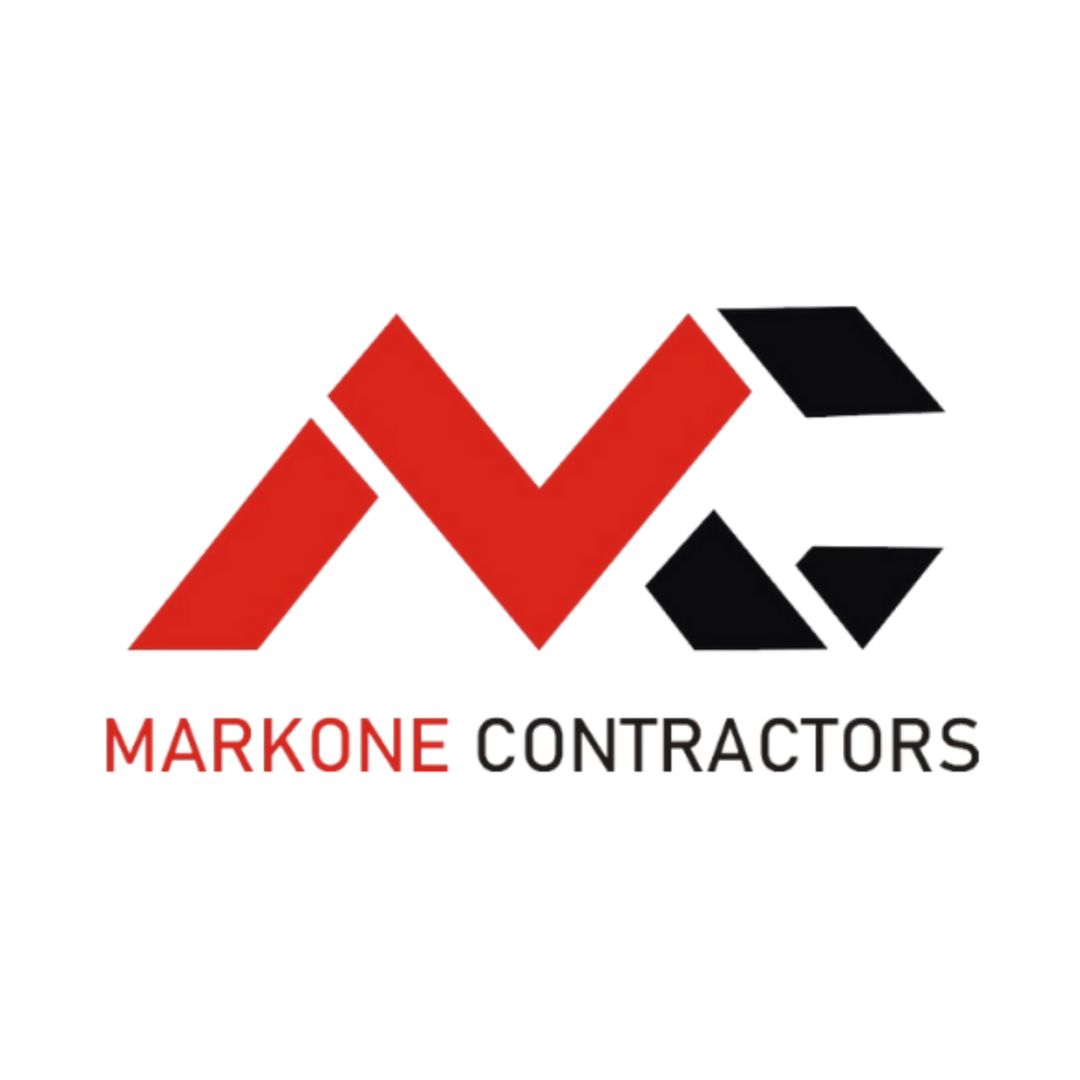

Process To Get Electrical Cost Estimate Report
Here I am going to share some steps to get electrical cost estimate report.
-
You need to send your plan to us.
You can send us your plan on info@estimatorflorida.com
-
You receive a quote for your project.
Before starting your project, we send you a quote for your service. That quote will have detailed information about your project. Here you will get information about the size, difficulty, complexity and bid date when determining pricing.
-
Get Estimate Report
Our team will takeoff and estimate your project. When we deliver you’ll receive a PDF and an Excel file of your estimate. We can also offer construction lead generation services for the jobs you’d like to pursue further.

